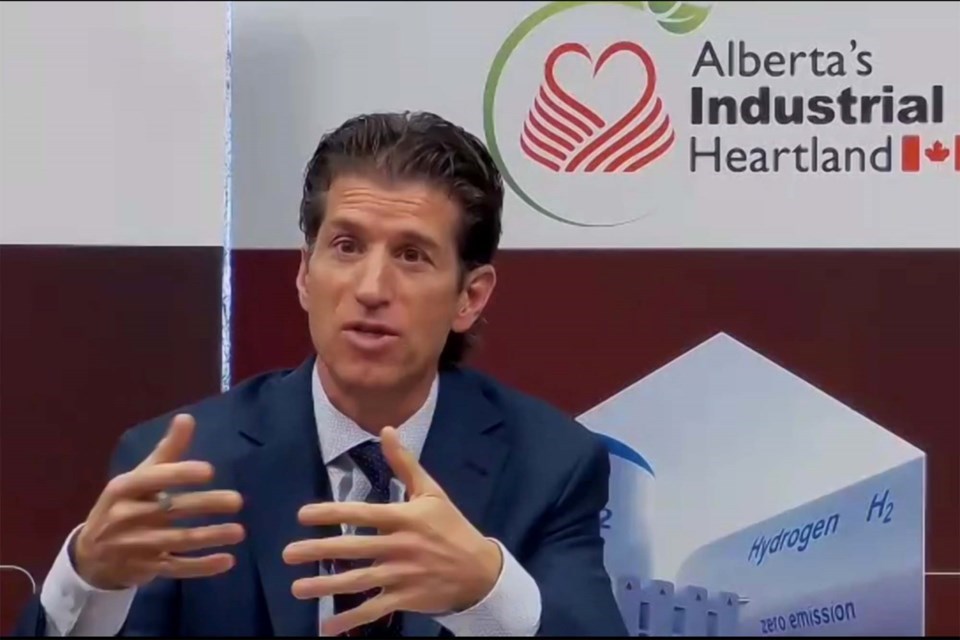Budget 2023 puts Alberta’s Industrial Heartland in a “competitive” position, according to the association.
Mark Plamondon, executive director of the Alberta Industrial Heartland Association (AIHA) said the federal government has taken positive steps to drive investment in decarbonization technologies in the Industrial Heartland with Budget 2023.
“The amount of effort that's needed to decarbonize our economy is significant and government support is necessary and when we're talking about a region like Alberta's Industrial Heartland which needs to compete with other jurisdictions globally for capital to provide products to global markets.
“It's important that our governments recognize that we need to level the playing field with other jurisdictions.
The budget was released on March 28 and included a plan for “affordable energy, good jobs, and a growing clean economy.”
The plan outlines what the government has describes as three tiers of federal financial incentives to encourage a “clean economy” including investment tax credits, strategic financing, and targeted investments, as well as pollution pricing and regulatory framework.
Plamondon was surprised to see the federal government had seemed to have taken feedback from “a number of sources and organizations” concerning the need for government support in driving decarbonization.
“(The federal government) certainly seems to have leaned into putting substantial government support behind a number of initiatives to lower the Canadian overall carbon footprint,” he said, adding that he should not have been surprised as the federal government has been leaning heavily into decarbonisation.
“On the other hand,” Plamondon continued, “I'm pleased to see the amount of supports for things like critical minerals development.”
The AIHA represents five municipalities in northern Alberta, including the City of Fort Saskatchewan, Lamont County, Strathcona County, Sturgeon County, and the City of Edmonton, and they are the “stewards for the economic development for the Industrial Heartland.”
The region has $45 billion in existing capital investment in chemical, petrochemical, oil, and gas investment and over $6 billion GDP, according to a press statement from the AIHI.
Budget documents state Canada is in a “prime position to provide a stable resource base for critical minerals.”
The Critical Minerals Infrastructure fund was launched on March 24, and allocates $1.5 billion to “energy and transportation projects needed to unlock priority mineral deposits.”
The fund was initially announced in Budget 2022 and is part of Canada’s Critical Minerals Strategy.
Plamondon said they are also pleased to see the contracts difference proposal as that will “help de-risk some of the decarbonisation initiatives that we see here in the Industrial Heartland.”
Contracts for difference is described as an investment tool to support clean growth projects.
The tool would be provided by the Canada Growth Fund and the contracts would “backstop” the future price of things like carbon. This would, according to the budget, provide predictability and de-risk major projects.
In a press statement, the AIHI noted other highlights in the budget including $6.3 billion over five years for the Investment Tax Credit for Clean Energy; $5.6 billion over five years in Investment Tax Credit for hydrogen; $4.5 billion Investment Tax Credit for Clean Technology Manufacturing; and $1.3 billion over six years to the Impact Assessment Agency.
Plamondon said the budget provides high-level framework, but in some cases lacks detail on important initiatives.
“Getting an understanding of some specific things like the CCUS — carbon capture, utilization and storage supports. They've referenced that legislative proposals will be released soon. The contracts for difference — the Government of Canada will consult. The high-level framework is encouraging of course, we would like to see and understand the details. The details can make the difference here,” he said.
When asked if he thinks the federal government did well in balancing industry and climate change initiatives Plamondon is hesitant.
“I’m going to say, I think so.
“I think what they've done here is a good first step to advancing additional government support for investments in Canada,” he said.



